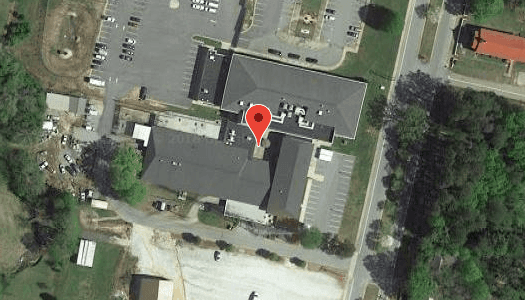Hazards
Natural hazards such as flood, fire, earthquake, tornado, and windstorms affect thousands of people every year. We need to know what our risks are from natural hazards and take sensible precautions to protect ourselves, our families, and our communities.
Drought:
According to NOAA, a “drought is a period of abnormally dry weather which persists long enough to produce a serious hydrologic imbalance (for example crop damage, water supply shortage, etc.) The severity of the drought depends upon the degree of moisture deficiency, the duration and the size of the affected area.”
Overall, Oconee County has a moderate level vulnerability to drought. There is a moderate probability (20%) that Oconee County would suffer a drought in any one year time frame. Droughts can greatly affect the agricultural production of the area as well as affect water treatment and wastewater treatment operations. This can have additional impacts that affect the ability of the county to function.
Earthquakes:
Earthquake is a term used to describe both sudden slip on a fault and the resulting ground shaking and radiated seismic energy caused by the slip, or by volcanic or magmatic activity, or other sudden stress changes in the earth (USGS). In the Upstate Region, there have been 70 earthquakes. There have only been 4 earthquakes over 2 on the Richter scale since 1986. None have caused any significant damage and were not noticed by residents.
The probability of earthquakes is very low. There have been only three epicenters in the region, over many years. Since 1698, there have only been two major earthquakes originating from the Middleton Place-Summerville Seismic Zone.
Check out the complete Earthquake guide at the SCEMD's Site.
Radiation:
Each of us is exposed to radiation daily from natural sources, including the Sun and the Earth. Small traces of radiation are present in food and water. Radiation also is released from man-made sources such as X-ray machines, television sets, and microwave ovens. Radiation has a cumulative effect. The longer a person is exposed to radiation, the greater the effect. A high exposure to radiation can cause serious illness or death.
The Oconee Nuclear power plant is located in Oconee County. Although the construction and operation of nuclear facilities are closely monitored and regulated by the Nuclear Regulatory Commission (NRC), accidents are possible. An accident could result in dangerous levels of radiation that could affect the health and safety of the public living near the nuclear power plant.
Tornadoes:
A Tornado is a “violently rotating column of air extending from a thunderstorm to the ground” (NOAA). Tornadoes can be extremely violent storms that can have relatively low wind speeds (less than 73 mph) to very high winds in excess of 300 miles per hour. In the South, tornadoes touch down most frequently from the month of March through May (NOAA).
Since 1950, there have been numerous tornadoes in South Carolina. The State averages approximately eleven tornadoes a year, which ranks twenty-sixth in the nation for tornado strikes.
Overall, Oconee County has a medium level vulnerability to tornadoes. The probability of one or more tornadoes touching down in Oconee County is 44% for any given year. While there have not been a huge number of tornadoes, it is clear from examining past events that they do have to potential to do significant damage within the County.
For more information on Tornados, visit this FEMA site.
For FAQ’s of Tornadoes, visit this NOAA site.
Wildfires:
Wildfires are the most common natural hazards in South Carolina. Approximately 5,000 wildfires occur in South Carolina each year. Wildfires can result from by natural causes, but most actually result from human action. The most common cause of fires is arson and debris burning. There is an average of 30,000 acres a year burnt by wildfires in the State.
Forest fires are a significant problem in each county in the Upstate Region. The majority of fires are caused by humans. Other causes of fire include lightning, campfires, smoking, debris burning, incendiary equipment use, and railroads.
More information about fire safety can be found here.
More information about wildfires can be found here.
Winter Storms:
Winter storms (consisting of snow, ice, and cold temperatures) can cause major problems in regions that are not prepared for them. These types of storms can damage property, create safety risks, destroy crops and valuable timber, damage infrastructure components such as power lines, and have enormous economic impacts. Overall, Oconee County has a high level vulnerability to winter storms. The probability of one or more winter storms in Oconee County is 100%. Examining past events it is evident that winter storms can significantly disrupt normal operations within a community. In addition, some ice storms associated with winter storms have caused significant property damage and disruption of the electric utilities.
Read more information about Winter Storms from FEMA.

